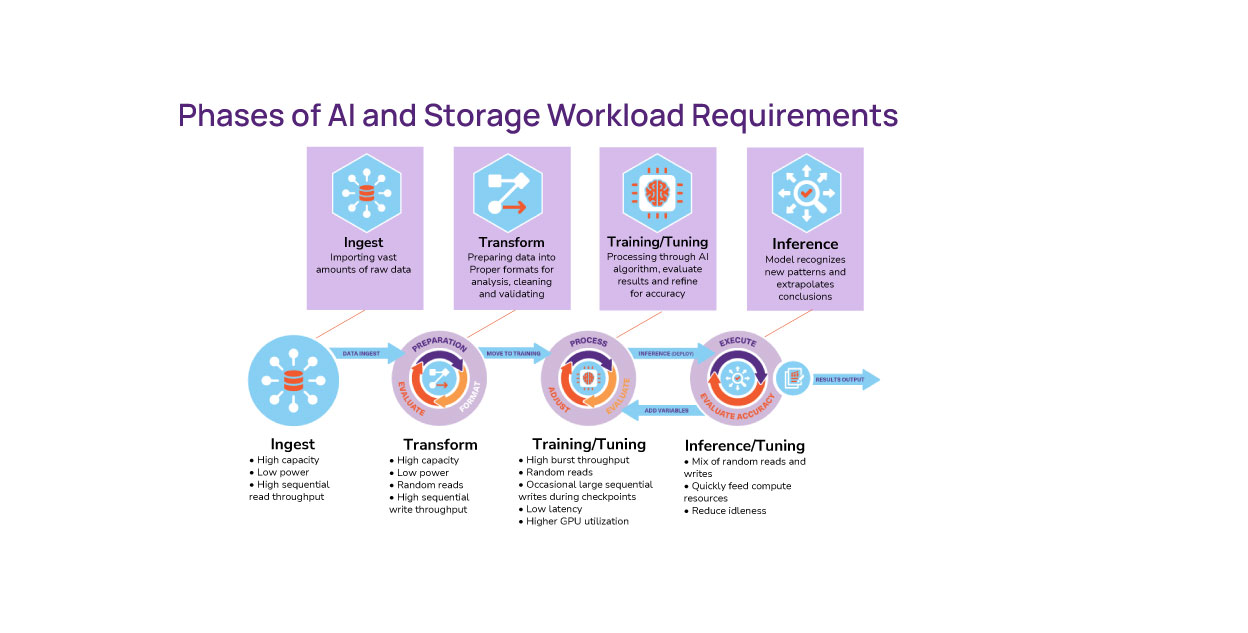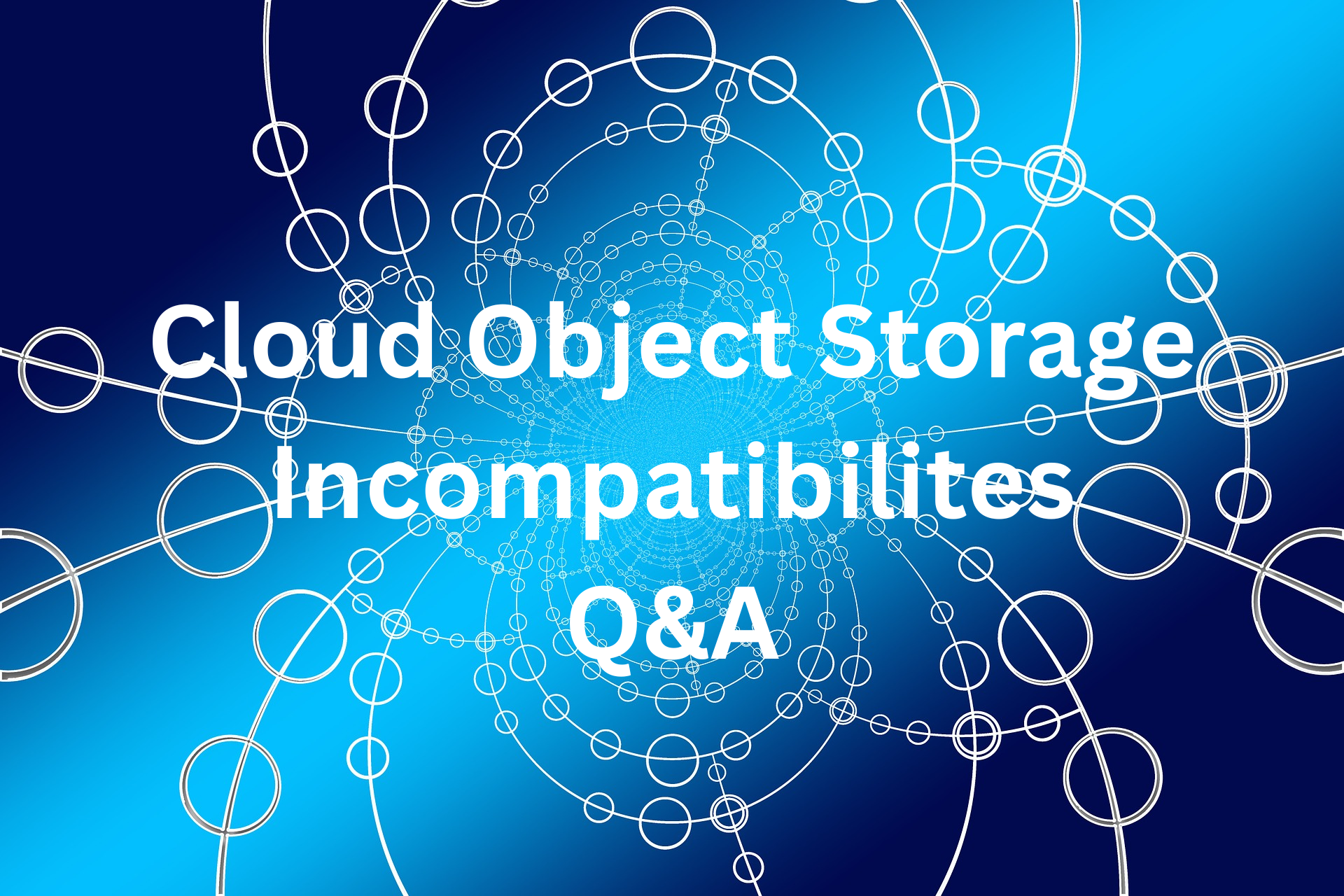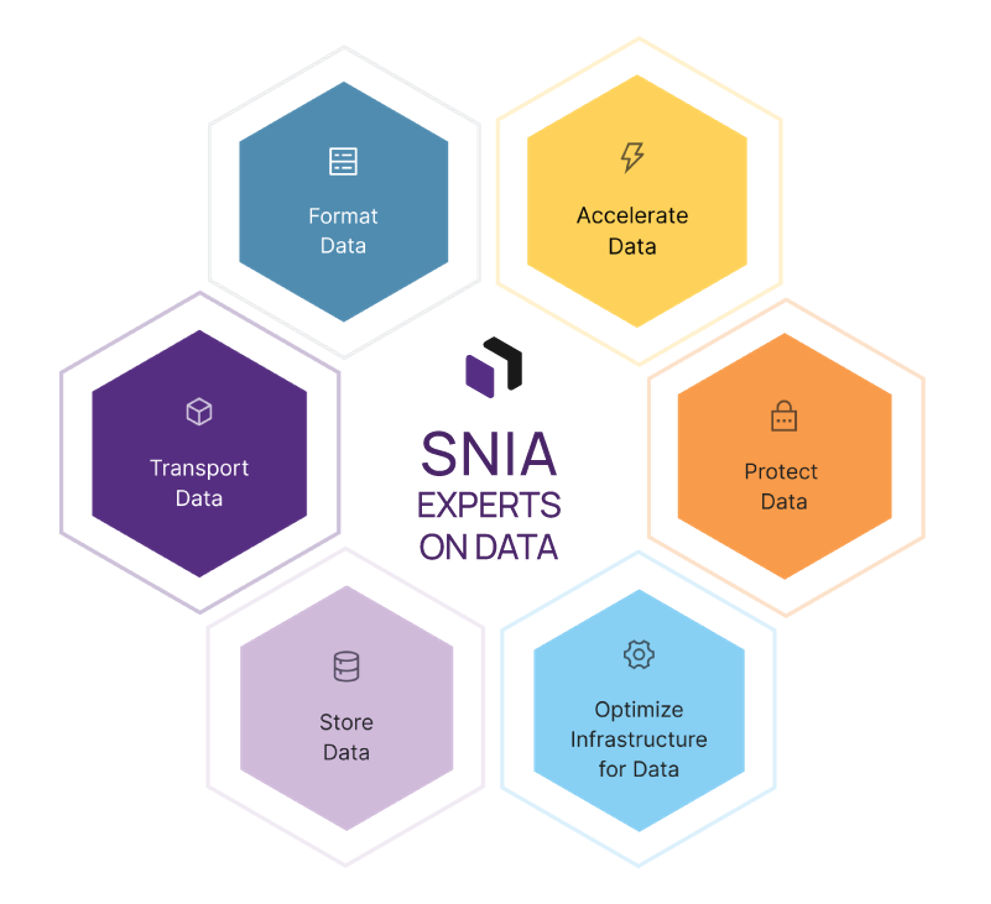Last month, the SNIA Networking Storage Forum (NSF) hosted a live webcast, “Object Storage: What, How and Why.” As the title suggests, our NSF members and invited guest experts delivered foundational knowledge on object storage, explaining how object storage works, use cases, and standards. They even shared a little history on how object storage originated. If you missed the live event, you can watch the on-demand webcast or find it on our SNIAVideo YouTube Channel.
We received some great questions from our live audience. As promised, here are the answers to them all.
Q. How can you get insights into object storage on
premises? E.g. quota, who consumes what, auditing the data for data leaks, etc.
Is there a tool for understanding and managing object data solutions?
A.Yes, on-premises storage systems have quota
management including enforcement options (and even that can be a hard or soft
enforcement). As for data leaks, object storage access and consumption are
always logged but even on-premises, the security model of the Internet should
be used there as well (take security seriously). If you’re unsure about where
to start with security, may we suggest our Storage
Security Series.
Q. Are object sizes a consideration if it makes sense to
use object storage?
A. Yes, both the size of the objects and the overall amount
of data are important, especially around egress from the public cloud. This is
where modeling and testing a solution will provide valuable feedback to the
performance and economics of object storage for a use case.
Q. I hear that object storage equals SLOW storage i.e.
for backup or archives, but can object storage have high performance and if so,
what use cases are there for high performance object storage?
A. Object storage is not necessarily slow; in some cases it can
be quite fast. It depends on how the application writes and reads data from
object storage and on the media used for the object storage. A single
monolithic file simply put in object storage will have a different behavior
characteristic than a more data-specific placement in object storage. Different
public cloud service levels (Hot, Cool, Archive for example on Azure) make a
difference in performance as well. Lastly, public cloud throttling can come
into play.
Q. You mentioned that on-premises-deployed S3 compatible
object storage solutions support object locking or enforced retention (like Amazon’s
Object Lock feature). Cloudian’s HyperStore supports a fully compliant and
SEC17a-4/FINRA Object Lock WORM solution.
Does NetApp StorageGrid support Object Lock?
A.Some on-premises can do object lock as well. We
recommend that you take a specific look at each vendor’s support specifications
for more details.
Q. What is the minimum size of data below which object
storage becomes inefficient, and other types of block and file-system storage are
more efficient?
A. There is no single number that would answer this question
for every application.
Q. How do current customers define the common meta-data
format, when you have a variety of data which are hard to group?
A. This would really be determined at the application level;
specifically, what application is reading and writing data from object storage.
Q. Can Object storage be enabled with versioning capabilities?
Is there any limit on the total number of versions for an object?
A. In some cases (for instance, at least for S3 storage),
the version is a copy of an object. Each copy has a version. It will depend on
the specific vendor’s solution as to whether there are limits of the versions, and
it is best to always check the vendor’s available information for their
implementation details.
Q. At a high-level, how would you differentiate on premises-based
object storage solutions from public, cloud offerings
A. The main differences are that with on-premises solutions
the customers have full control whereas the public cloud and service provider
offerings are more globally accessible. Additionally, public offerings may have
additional features, functionality, and service levels available.
Q. Fundamentally, object storage eventually lives on
block storage. For things like erasure coding for geo distributed access and
protection, does the object storage engine handle that replication of data
blocks on SSD/HDD storage up at the application layer?
A. Each object storage provider will ensure the availability
of the data in their own way at the hardware control plane level. The public
cloud providers intentionally abstract the details of the hardware in many
cases; the shared responsibility model however puts the ultimate control of the
data on the tenant.
Q. What are the leading object storage solutions in the
Gartner benchmark?
A.As recently as 2019, Gartner did issue a Magic
Quadrant for Distributed File Systems and Object Storage which showcases
the industry solutions for non-hyperscale object storage implementations. Many
of the vendors allow reprints and we recommend you read the full report for
those implementations.















Leave a Reply